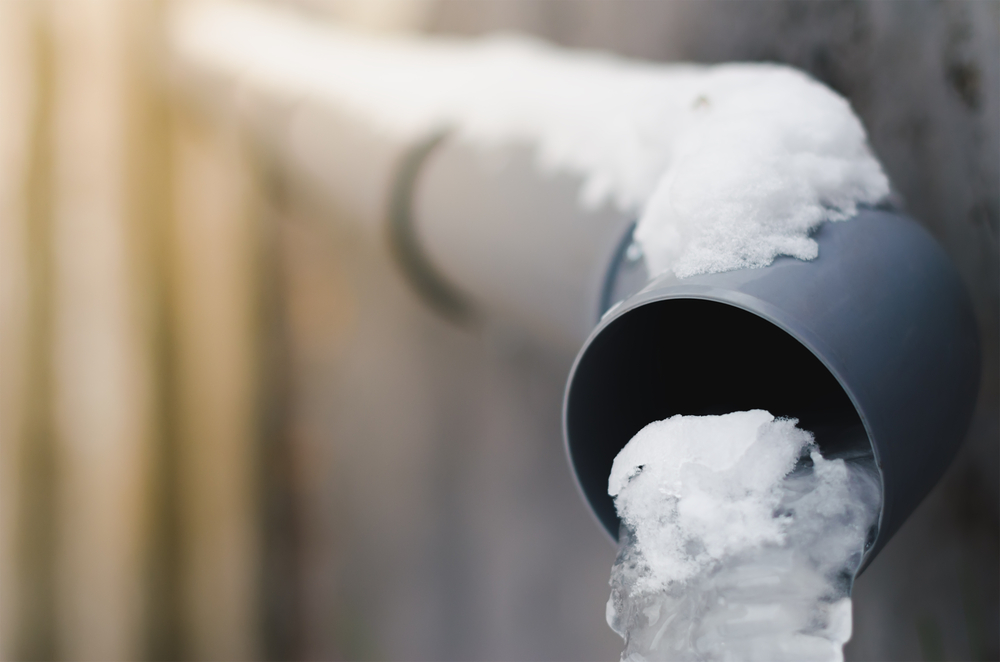Protect Against Frozen Pipes in Cold Weather: Professional Strategies
Protect Against Frozen Pipes in Cold Weather: Professional Strategies
Blog Article
This post down below about How To Avoid Freezing Pipes is absolutely engaging. Read it for yourself and see what you think about it.

Cold weather can wreak havoc on your pipes, especially by freezing pipelines. Here's just how to stop it from occurring and what to do if it does.
Intro
As temperatures decline, the risk of icy pipes boosts, possibly resulting in pricey repair services and water damages. Comprehending just how to prevent frozen pipelines is essential for home owners in cool climates.
Avoidance Tips
Insulating at risk pipes
Wrap pipes in insulation sleeves or utilize warmth tape to shield them from freezing temperature levels. Concentrate on pipes in unheated or outside areas of the home.
Heating strategies
Keep indoor rooms appropriately heated, particularly locations with pipes. Open cabinet doors to enable cozy air to flow around pipelines under sinks.
Just how to identify icy pipelines
Seek decreased water flow from faucets, uncommon smells or sounds from pipelines, and noticeable frost on revealed pipelines.
Long-Term Solutions
Structural adjustments
Consider rerouting pipelines far from outside walls or unheated areas. Include added insulation to attic rooms, basements, and crawl spaces.
Upgrading insulation
Purchase premium insulation for pipes, attic rooms, and wall surfaces. Appropriate insulation helps keep constant temperatures and reduces the danger of icy pipes.
Protecting Outside Pipes
Garden pipes and outdoor faucets
Separate and drain garden tubes before winter season. Mount frost-proof spigots or cover exterior taps with insulated caps.
Comprehending Icy Pipelines
What causes pipes to freeze?
Pipelines ice up when exposed to temperature levels below 32 ° F (0 ° C) for extended durations. As water inside the pipes ices up, it broadens, putting pressure on the pipeline walls and possibly creating them to break.
Risks and damages
Icy pipelines can result in supply of water interruptions, property damages, and pricey fixings. Ruptured pipes can flood homes and create considerable architectural damage.
Signs of Frozen Pipeline
Identifying icy pipelines early can prevent them from breaking.
What to Do If Your Pipelines Freeze
Immediate actions to take
If you believe frozen pipelines, keep faucets open to eliminate pressure as the ice thaws. Use a hairdryer or towels taken in hot water to thaw pipelines slowly.
Final thought
Preventing icy pipelines needs proactive procedures and fast reactions. By recognizing the causes, indications, and safety nets, homeowners can shield their plumbing during winter.
5 Ways to Prevent Frozen Pipes
Drain Outdoor Faucets and Disconnect Hoses
First, close the shut-off valve that controls the flow of water in the pipe to your outdoor faucet. Then, head outside to disconnect and drain your hose and open the outdoor faucet to allow the water to completely drain out of the line. Turn off the faucet when done. Finally, head back to the shut-off valve and drain the remaining water inside the pipe into a bucket or container. Additionally, if you have a home irrigation system, you should consider hiring an expert to clear the system of water each year.
Insulate Pipes
One of the best and most cost-effective methods for preventing frozen water pipes is to wrap your pipes with insulation. This is especially important for areas in your home that aren’t exposed to heat, such as an attic. We suggest using foam sleeves, which can typically be found at your local hardware store.
Keep Heat Running at 65
Your pipes are located inside your walls, and the temperature there is much colder than the rest of the house. To prevent your pipes from freezing, The Insurance Information Institute suggests that you keep your home heated to at least 65 degrees, even when traveling. You may want to invest in smart devices that can keep an eye on the temperature in your home while you’re away.
Leave Water Dripping
Moving water — even a small trickle — can prevent ice from forming inside your pipes. When freezing temps are imminent, start a drip of water from all faucets that serve exposed pipes. Leaving a few faucets running will also help relieve pressure inside the pipes and help prevent a rupture if the water inside freezes.
Open Cupboard Doors
Warm your kitchen and bathroom pipes by opening cupboards and vanities. You should also leave your interior doors ajar to help warm air circulate evenly throughout your home.
:strip_icc()/snow-outdoor-faucet-pipes-4af65d1e5e904fb1aa7bf74071fe5d89.jpg)
Hopefully you liked our section about How to Prevent Your Pipes From Freezing. Thank you so much for spending some time to read our article. For those who enjoyed our blog posting plz be sure to share it. Thanks a lot for going through it.
Click Here Report this page